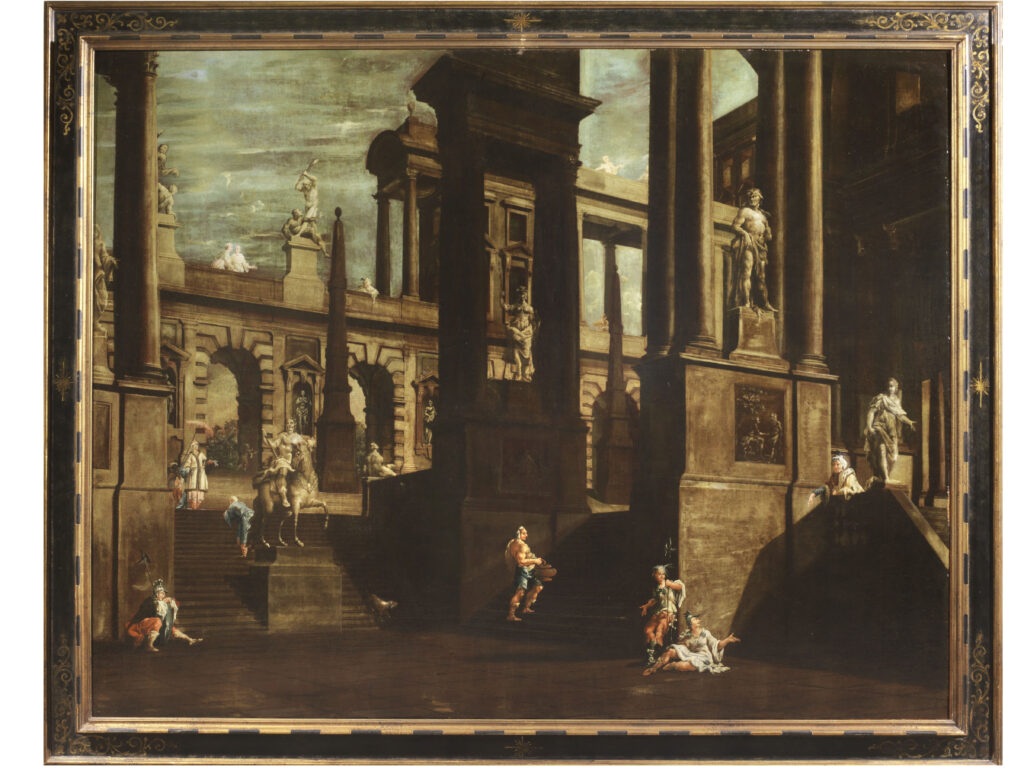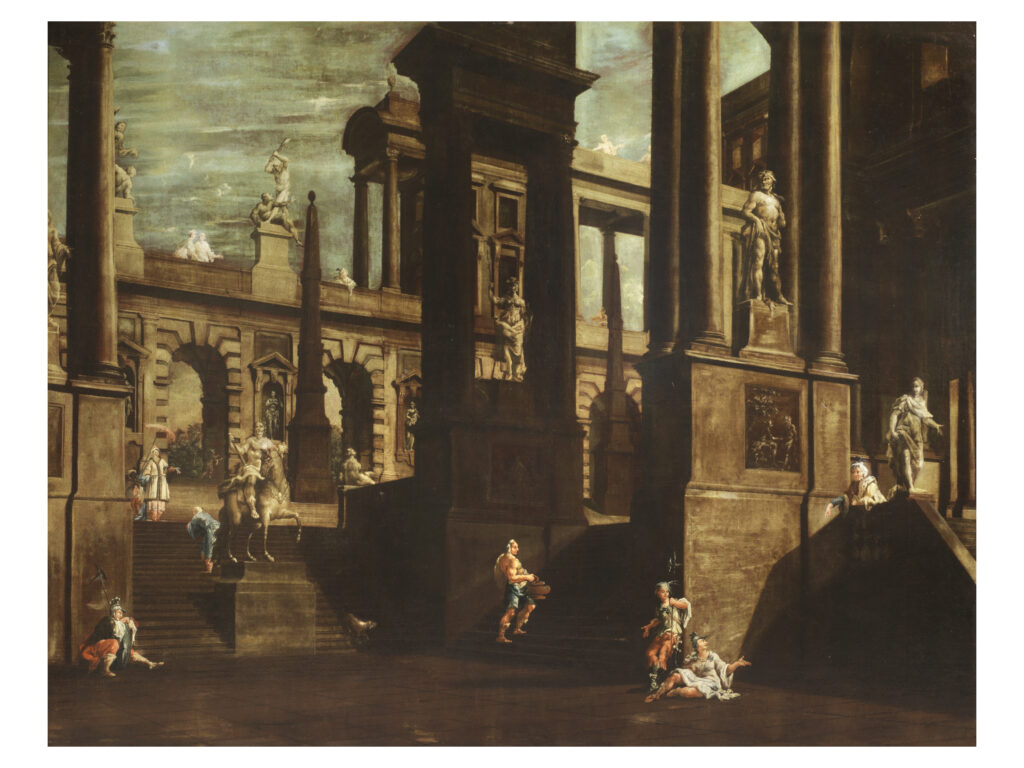MID-18TH CENTURY VENETIAN SCHOOL
Architectural Capriccio with exterior view
oil on canvas, cm 126×162
These two elegant canvases, attributable to the 18th-century Venetian school, are fascinating examples of architectural capriccios, imaginary and visually impressive constructions that recall ancient Roman ruins with technical mastery and a vivid imagination.
The first canvas depicts a partially dark interior, perhaps a prison or fortress, illuminated by sudden evening glimmers and rays of sunlight. The painting is characterised by an intricate labyrinth of stairways, with no visible way out, populated by small figures, echoing the visionary Imaginary Prisons of Giovanni Battista Piranesi, (Mestre, 1720 – Rome, 1778) with their suspended bridges, aerial passages and instruments of torture.
In the second canvas, the artist abandons the gloomy atmosphere to immerse himself in an airy courtyard of a Renaissance palace. The painter’s imagination dwells on Palladian-style architecture, adorned with obelisks, decorated arches and slender columns. These elements seem to be drawn from the architectural manuals of Michele Sanmicheli and Sebastiano Serlio, illustrious masters of the Most Serene Republic of Venice. The marble sculptures, in a white that stands out against the streaked sky, depict mythological and historical scenes. These marble ornaments embellish the sumptuous palace, exemplifying Venetian architectural magnificence.
Following a common practice in the 18th century, the figures depicted within the canvases appear to be the work of a different artist than the one who painted the architectural structures, as can be seen from the light and lively palette, in stark contrast to the darker tones of the backgrounds, infusing his characters with immediate life. The two canvases are thus the result of a collaboration between more than one painter, engaged in grandiose decorative projects for villas and palaces in the Veneto. Although the names of the artists are unknown, it is plausible that these works can be ascribed to the tradition of masters such as Antonio Visentini (Venice, 1688–1782) and Francesco Battaglioli (Modena, 1710 – Venice, 1796), painters known for their extraordinary perspective and decorative skills, who probably influenced or collaborated with the artists of the canvases described, making the compositions presented here enchanting examples of 18th-century Venetian painting.


